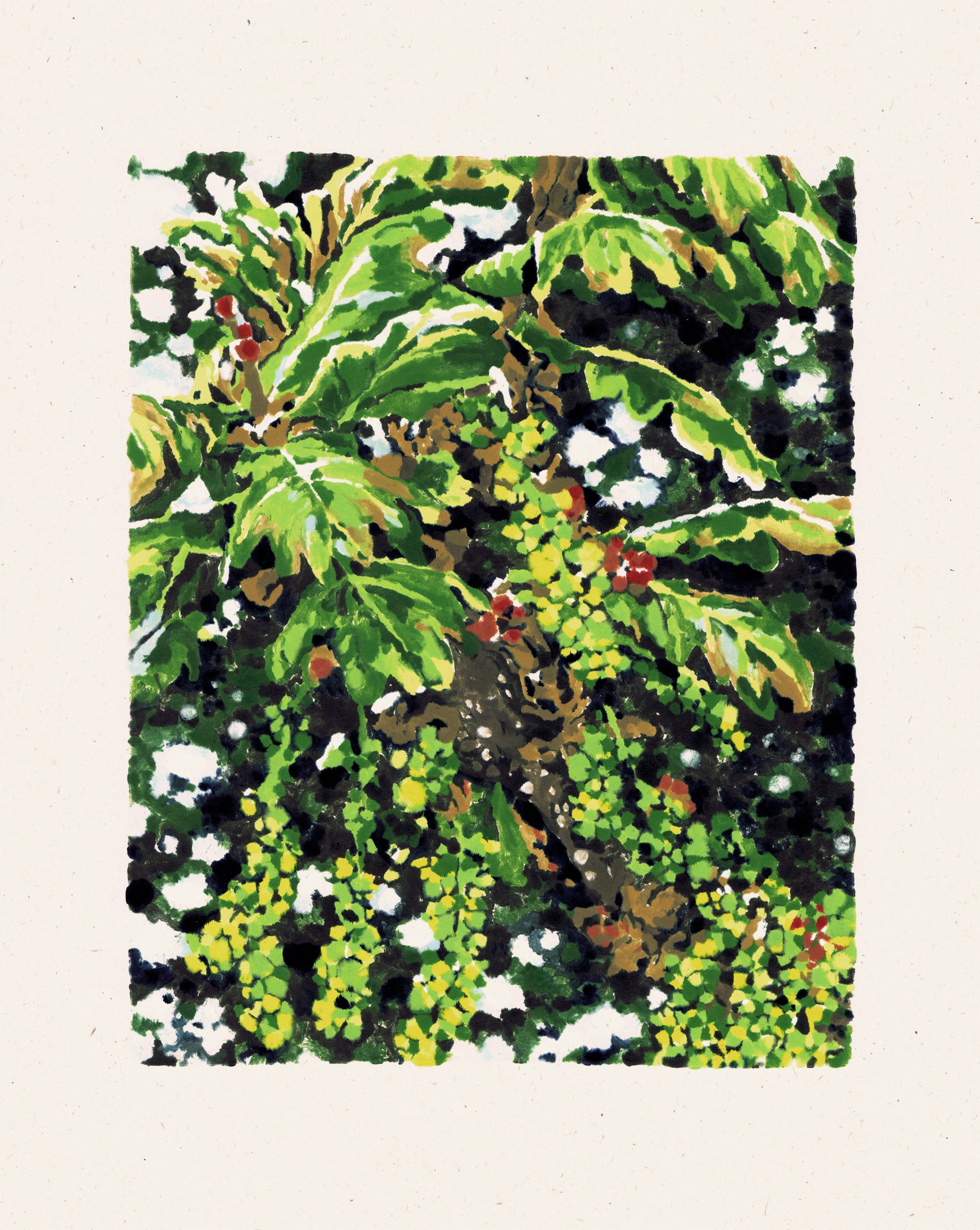In much the same way that constraints ease the process of making pictures, I have been trying out working under time conditions to help focus and practice writing. Below is a 20 minute exercise from the allotment, with a little bit of editing and work made in the studio in response. March slightly ran away from me as I was burrowed away in the studio working on something that I’ll share soon, alongside sowing lots of seeds and spending time on the plot, so we’re skipping straight into April. Thanks for reading!
It’s Tuesday 15th April. The air feels thick and heavy. Applying a gentle pressure between the eyes that makes the brow furrow and focus.
Apt for a day on the plot that could be defined by its intricate and extravagant details. At this, still early, stage of unfolding, it feels as though the plot is peppered with little pops of white, pink, yellow and orange of the awakening plants. Some have already seen their first show and are now doing the hard work of growing fruits where there were flowers. Successfully pollinated. At this moment, the space shimmers with the cherries, apples (crab, pippin and some inherited unknown variety), pears, gages and plums as well as the primroses, primula, forsythia, the first tulips and tiny stars of wild garlic.
A little slower, and the soft chartreuse drooping stems of the white, red and black-currants put on a slightly less showy display. Along their stems hang clusters of 9-or-so delicate, 5-petalled flower cups. A soft yellow with just a hint of pink at the centre. I notice a few ants hanging upside-down from the flowers, drinking nectar from the cups, tiny revelers at a morning feast. Some racemes have even begun to set fruit already, hard, green berries that’ll slowly swell over the next few months. This particular currant is planted amongst a guild of chives, comfrey, woodruff, hostas, ostrich ferns and sorrel. It’s a tricky spot to protect the fruits from eager blackbirds, so it’s unlikely that we’ll taste many of them, but they’ll be appreciated by someone nevertheless.
This tiny food forest sits at the edge of the limbs of the oak at the top of the plot. Its canopy joins the more subtle aspect of the April chorus. New leaves emerging from amber buds - a compact umbrella of 5 or 6 leaves at each tip currently - opening out like a hand revealing something hidden. The growing shoot beyond these leaves has a soft grey to it, with intense, red dots where the leaves will grow from. Red to confuse the aphids away from the succulent, tender tips.
Below the leaves, the oak catkins hang similarly to the currants, though work in a different way. Rather than the acrobatic ants, the oak relies on wind for pollination. Male catkins open, releasing pollen into the air to be carried on the breeze to the female flowers of another oak, to develop into an acorn. Before opening, the catkins appear as tightly bound, closed clumps of yellow. Miniature grapes. Some have burst open, revealing incredibly fine, black-tipped explosive sprays. This tree is covered in catkins and will be releasing huge quantities of pollen into the air. Into the clouds. Into my lungs. Maybe we’re due another mast year. Drifting in the will of the warm April air.



